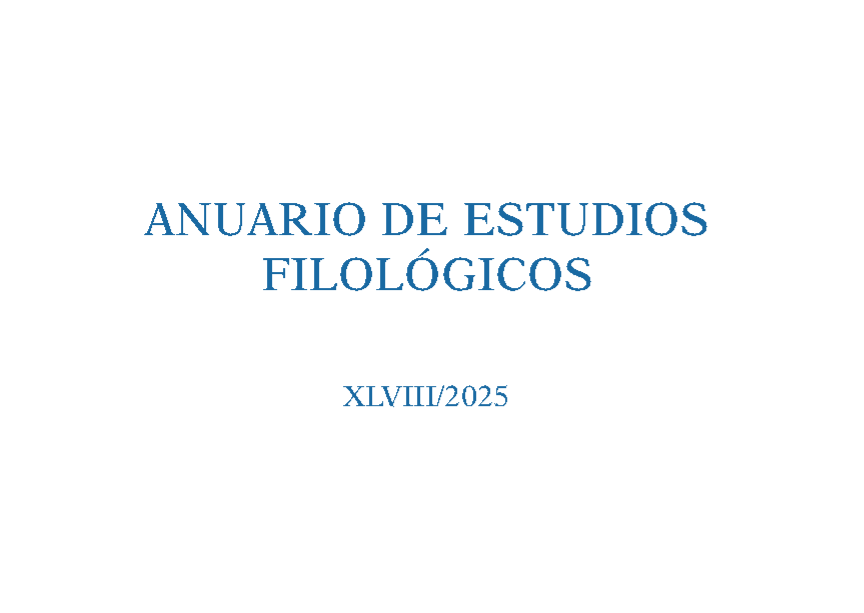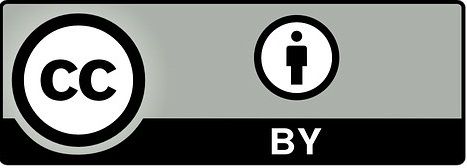Homer in the practical teaching of Greek rhetoric
DOI:
https://doi.org/10.17398/2660-7301.48.109Keywords:
Homeric poetry, Progymnasmata, Rhetorical teaching, Antiquity, LibaniusAbstract
The purpose of this work is to analyze the wide, varied and nuanced presence of Homeric poetry in the fourteen types of preliminary exercises, or progymnasmata, which constituted the practical part of the introduction to the teaching of rhetoric in Greece and Rome, starting from the oldest known corpus, that attributed to the rhetorician Libanius of Antioch (4th century AD). The first part of the article will retrieve data from the corpus of exercises in general and the second part will focus on a pair of contrasting exercises.
Downloads
References
ARCOS PEREIRA, Trinidad (ed.) (2021): Retórica e ideología en las aulas del Humanismo: los progymnasmata. Vigo: Ed. Academia del Hispanismo.
BERARDI, Francesco (2017): La retorica degli esercizi preparatori: Glossario ragionato dei Progymnásmata. Hildesheim-Zürich-New York: Olms.
BOUQUIAUX-SIMON, Odette (1968): Les lectures homériques de Lucian. Bruxelles: Palais des Académies.
CRIBIORE, Raffaella (1996): Writing, Teachers, and Students in Graeco-Roman Egypt. Atlanta: Scholars Press.
DÍAZ LAVADO, Juan Manuel (1993): «Homero y la Segunda Sofística. El texto homérico a través del testimonio de Plutarco». Anuario de Estudios Filológicos, 16, 71-90.
FALIVENE, Maria Rosaria (1981): «Il codice della reciprocità nella poesia alessan-drina». Quaderni urbinati di cultura classica, 37.3, 87-104.
FERNÁNDEZ DELGADO, José Antonio (1994): «Hexametrische ethopoiíai auf Papyrus und anderen Materialien». En Bülow-Jacobsen, Adam (ed.): Procee-dings of the XX International Congress of the Papyrologists. Copenhagen: Museum Tusculanum, 299-305.
FERNÁNDEZ DELGADO, José Antonio (2023): Reseña, Arcos Pereira (2021). Tempus, 53, 87-92.
GIBSON, Craig A. (2008): Libanius's Progymnasmata: Model Exercises in Greek Prose Composition and Rhetoric. Atlanta: Society of Biblical Literature.
HEATH, Malcolm (2022): «Homer in the Theory and Teaching of Rhetoric». En Manolea (2022: 143-162).
KENNEDY, George A. (2003): Progymnasmata. Greek Textbooks of Prose Composition and Rhetoric. Leiden: Brill.
KIM, Lawrence (2022): «Homer in the Second Sophistic». En Manolea (2022: 164-188).
KINDSTRAND, Jan Fredrik (1973): Homer in der Zweiten Sophistik. Uppsala: Uppsala Univ.
MAEHLER, H. (2009): «Ilias und Odyssee als Objecte der Forschung in der Antike». En Römer, Cornelia (ed.): Das Phänomenon Homer in Papyri, Handschriften und Drucken. Wien: Phoibos, 19-27.
MANOLEA, Christina-Panagiota (ed.) (2022): Brill's Companion to the Reception of Homer from the Hellenistic Age to Late Antiquity, Leiden-Boston: Brill.
MARROU, Henri Irénée (1970): Histoire de l'éducation dans l'Antiquité. Paris: Seuil.
PATILLON, Michel y BOLOGNESI, Giancarlo (eds.) (1997): Aelius Théon. Pro-gymnasmata. Paris: Belles Lettres.
PIZZONE, Aglae (2022): «The Quest for Meaning: Homeric Quotations in Synesius of Cyrene and Libanius». En Manolea (2022: 189-208).
RECHE MARTÍNEZ, M.ª Dolores (1991): Teón. Hermógenes. Aftonio. Ejercicios de retórica. Introducción, traducción y notas. Madrid: Gredos.
UREÑA BRACERO, Jesús (2007): «Homero en la formación retórico-escolar griega: etopeyas con tema del Ciclo Troyano», Emerita, 67.2, 315-338.
UREÑA BRACERO, Jesús (2008): «Algunas consideraciones sobre la autoría de los progymnasmata atribuidos a Libanio». En Fernández Delgado, José Antonio et al. (eds.): Escuela y literatura en Grecia Antigua. Cassino: Università di Cassino, 645-689.
WEBB, Ruth (2010): «Between poetry and rhetoric: Libanius’ use of Homeric subjects in his Progymnasmata». Quaderni urbinati di cultura classica, 95.2, 131-152.
WHITMARSH, Tim (2001): Greek Literature and the Roman Empire. The Politics of Imitation. Oxford: OUP.

Downloads
Published
Versions
- 2025-06-17 (2)
- 2025-06-17 (1)


